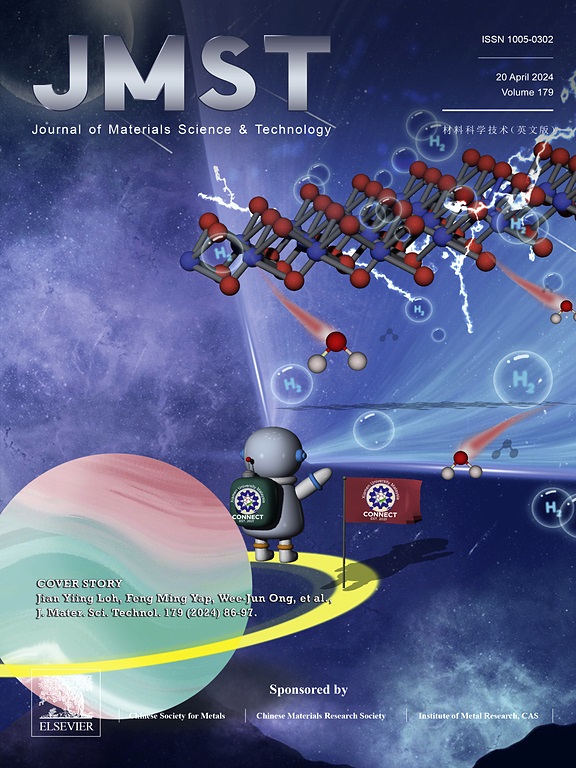Enhancing H2 evolution with Mo-N Bonding in Hierarchical Periodic Macroporous Photocatalyst of S-doped g-C3N4 and N-doped MoS2
IF 11.2
1区 材料科学
Q1 MATERIALS SCIENCE, MULTIDISCIPLINARY
引用次数: 0
Abstract
Heterojunctions constructed by traditional methods often result in random stacking of materials, leading to lattice mismatch, which adversely affects the extraction and transfer of photo-generated carriers and, in turn, hampers light utilization efficiency. In this work, we report a novel heterojunction comprising alternating S-doped g-C3N4 (SCN) and N-doped MoS2 (NMS), bridged by Mo–N covalent bonds within hierarchical periodic macroporous (HPM) walls. This heterojunction is synthesized by co-pyrolyzing dicyandiamide, thiourea, and ammonium molybdate. Transient reflectance photoluminescence measurements reveal that the Mo–N covalent bonds serve as “fast tracks” for electron transfer from SCN to NMS, significantly enhancing the charge separation efficiency. Additionally, the well-defined spatial separation of photo-induced carriers, coupled with the efficient mass transfer within the HPM structure, promotes superior carrier utilization. Thanks to the synergistic effect of HPM structures and the bridged Mo–N bonds, the optimized HPM NMS/SCN-1.3 sample exhibits a remarkable H2 evolution rate of 473.3 µmol g−1 h−1 under visible light irradiation, which is approximately 163 and 19 times higher than bulk g-C3N4 (BCN) and HPM SCN, respectively. This work offers valuable insights into the design of HPM heterojunctions composed of co-catalysts and host catalysts, paving the way for enhanced photocatalytic H₂ evolution.

求助全文
约1分钟内获得全文
求助全文
来源期刊

Journal of Materials Science & Technology
工程技术-材料科学:综合
CiteScore
20.00
自引率
11.00%
发文量
995
审稿时长
13 days
期刊介绍:
Journal of Materials Science & Technology strives to promote global collaboration in the field of materials science and technology. It primarily publishes original research papers, invited review articles, letters, research notes, and summaries of scientific achievements. The journal covers a wide range of materials science and technology topics, including metallic materials, inorganic nonmetallic materials, and composite materials.
 求助内容:
求助内容: 应助结果提醒方式:
应助结果提醒方式:


